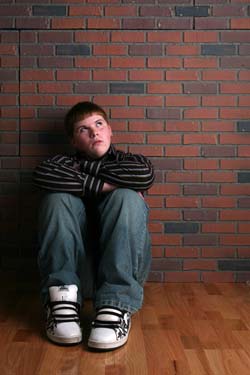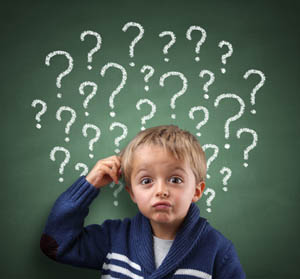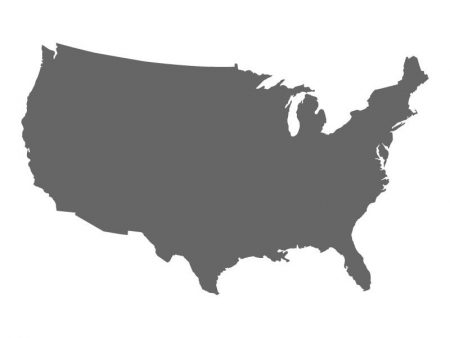ADHD Common in People with Mood Disorders

In a meta-analysis published in the journal Acta Psychiatrica Scandinavica in 2021, researcher Andrea Sandstrom and colleagues reported that people with mood disorders had a three times higher incidence of attention-deficit hyperactivity disorder (ADHD) than people without mood disorders. ADHD was also more likely to occur in people with bipolar disorder than in people with major depression. The comorbidity is most common in childhood, less so in adolescence, and lowest in adulthood.
Based on 92 studies including a total of 17,089 individuals, the prevalence of ADHD in people with bipolar disorder is 73% in childhood, 43% in adolescence, and 17% in adulthood. Data from 52 studies with 16,897 individuals indicated that prevalence of ADHD in major depressive disorder is 28% in childhood, 17% in adolescence, and 7% in adulthood.
Editor’s Note: A key implication of this research is that there is a huge overlap of bipolar disorder and ADHD in childhood, and that physicians need to specifically look for bipolar symptoms that are not common in ADHD to make a correct diagnosis. These include: brief or extended periods of mood elevation and decreased need for sleep in the youngest children; suicidal or homicidal thoughts and threats in slightly older children; hyper-sexual interests and actions; and hallucinations and delusions. When these are present, even when there are also clear-cut ADHD symptoms, a clinician must consider a diagnosis of bipolar disorder and treat the child with mood stabilizers prior to using stimulants or other traditional ADHD medications.
Conversely, physicians should be aware of the much lower incidence of ADHD in adolescents and adults with bipolar disorder. Here one should first make sure that the apparent ADHD symptoms of hyperactivity, inattention, poor concentration, etc. do not result from inadequately treated mania and depression, and if they do, treat these symptoms to remission prior to using traditional ADHD medications.
Study Examines Comorbidity of ADHD and Bipolar Disorder

In a 2021 review and meta-analysis in the journal Neuroscience and Biobehavioral Reviews, researcher Carmen Schiweck and colleagues described the comorbidity of attention-deficit hyperactivity disorder (ADHD) and bipolar disorder in adults. This was the first review and meta-analysis to quantify the comorbidity of the two fairly prevalent disorders. The meta-analysis included 71 studies with a combined total of 646,766 participants from 18 countries.
The review found that among people with ADHD, about 1 in 13 also have bipolar disorder, while among people with bipolar disorder, 1 in 6 have comorbid ADHD. The prevalence differed depending on the continent where patients lived and the diagnostic systems used there, with greater prevalence of both disorders in the US, where the Diagnostic and Statistical Manual of Mental Disorders is used, than in Europe, where the International Classification of Diseases is typically used. (Other parts of the world were less represented in the meta-analysis.) Schiweck and colleagues found that bipolar disorder had an onset about 4 years earlier in patients who had comorbid ADHD.
Characteristics of Youth with Bipolar Spectrum Disorders

In a 2020 article in the Journal of Child and Adolescent Psychopharmacology, researcher Gonzalo Salazar de Pablo and colleagues described characteristics of youth with three different bipolar spectrum disorders: bipolar I disorder, bipolar disorder not otherwise specified (NOS) and mood disorder (MD) not otherwise specified. The participants were hospitalized adolescents aged 12–18 years, who were highly impaired with hallucinations, delusions, incoherence, or inability to function.
Mania (especially irritability) and depressive symptoms were common in all three groups.
Many of the youths had comorbid conditions. Approximately 40% of each diagnosis group had an anxiety disorder. Attention deficit hyperactivity disorder (ADHD) was seen in 29.2% of those with bipolar I disorder, 34.5% of those with bipolar NOS, and 43.5% of those with mood disorder NOS. Oppositional defiant disorder was seen in just over 20% of those with bipolar I or bipolar NOS, and just over 30% of those with mood disorder NOS. Substance use disorders were seen in 8.3% of those with bipolar I and about 21% of those with bipolar NOS or mood disorder NOS. Many of the participants had moderate to severe suicidality.
The median delay before the adolescents received treatment for their moderate to severe symptoms was 21 to 25 weeks. After discharge from the hospital, the adolescents with bipolar I, bipolar NOS, and mood disorder NOS were typically treated with atypical antipsychotics (79.2%, 62.1%, and 56.5%, respectively), mood stabilizers (66.7%, 31.0%, and 34.8%), and lithium (58.3%, 20.7%, 30.4%), with greater use of mood stabilizers and lithium than on admission and less use of antidepressants. Few children were on ADHD medications on admission, and even fewer (4-9%) on discharge.
The authors conclude: “Youth with BD-I, BD-NOS, and MD-NOS experience considerable symptomatology and are functionally impaired, with few differences observed in psychiatric comorbidity and clinical severity. Moreover, youth with BD-NOS and MD-NOS undergo a [long] period with subthreshold manic symptoms, enabling identification and, possibly, preventive intervention of those at risk for developing [bipolar disorder] or other affective episodes requiring hospitalization.”
Editor’s Note: These findings replicate many others in the field indicating that children with bipolar spectrum disorders, even those with symptoms short of a full-blown bipolar I diagnosis, are highly impaired with multiple comorbidities and high levels of suicidality and other dangerous symptoms. These patients deserve systematic pharmacological intervention based on an extensive clinical treatment literature.
The only thing the authors failed to address is that not only does no such clinical treatment literature exist, but there does not seem to be any recognition by the National Institute of Mental Health and other funding bodies that a series of treatment-oriented studies in children and adolescents is urgently needed.
The 2010 epidemiological studies of Kathleen Merikangas and colleagues indicate that 2.2% of adolescents have a bipolar spectrum diagnosis and that 80% of those young people are not in any kind of treatment. This is in part driven by a lack of consensus about appropriate treatment. The magnitude and seriousness of this illness creating lifelong problems, disability, cognitive impairment, and the loss of more than a decade of life expectancy is a public health catastrophe.
In the 1980s, AIDS protesters had to raise awareness, protest, and clamor for treatment studies in a highly confrontational manner before AIDS research was appropriate funded. Anthony Fauci, Director of the National Institute of Allergy and Infectious Disease since 1984, has said he was finally convinced that the AIDS protestors were correct, and he then joined forces with them to foster and accelerate treatment studies. The prognosis for AIDS changed from certain death in the 1980s to a manageable illness today.
We need leaders to demand attention to the lack of studies in bipolar disorder at a threshold that cannot be ignored by leaders of the NIMH. Patient advocacy groups must push the NIMH to fund treatment studies for bipolar disorder. It is clear that without some new form of pressure, the NIMH will fail in its stated mission to help make the lives of those with serious mental illness less grave. The current generation and many in the future generations of patients with bipolar disorder will otherwise face disaster.
Clinical Risk Prediction in Youth at Risk for Bipolar Spectrum Disorder and Relapse

Researchers from two 15-year studies of bipolar youth, COBY (The Coarse and Outcome of Bipolar Youth Study) and BIOS (Bipolar Offspring Family Study), have used the longitudinal data from their studies in order to create a risk calculator that can predict an individual’s likelihood of illness.
At the 2020 meeting of the International Society for Bipolar Disorders, researcher Danella Hafeman presented research on a risk calculator that predicts the 5-year risk for onset of a bipolar disorder spectrum diagnosis (BPSD) in young people at high risk and can reasonably distinguish those who will receive a diagnosis from those who will not.
Some of the factors used in the risk calculator include dimensional measures of mania, depression, anxiety, and mood lability; psychosocial functioning; and the age at which parents were diagnosed with a mood disorder.
Hafeman reported that there was a 25% risk that offspring of a bipolar parent would develop a bipolar disorder spectrum diagnosis. In a population ranging in age from 6 to 18 years, Hafeman and colleagues found that anxiety and depression symptoms were a sign of vulnerability to a bipolar spectrum disorder, while subthreshold manic symptoms indicated that a bipolar spectrum disorder could soon emerge. Sudden or exaggerated changes in mood were also an important predictor of BPSD.
Hafeman and colleauges noted that even in children as young as 2 to 5 years old, there were already signs of anxiety, aggression, attention problems, depression, and sudden mood changes in those who would go on to receive a diagnosis of bipolar spectrum disorder.
The researchers were also able to predict which patients with BPSD would have a relapse. According to Hafeman and colleagues, “The most influential recurrence risk factors were shorter recovery lengths, younger age at assessment, earlier mood onset, and more severe prior depression.”
Editor’s Note: Offspring of a parent with bipolar disorder are at high risk for anxiety, depression, attention deficit hyperactivity disorder (ADHD), oppositional defiant disorder, and bipolar disorder. Parents should be alert for the symptoms of these illnesses and seek evaluation and treatment for their children as necessary. Parents should also be aware of the risk factors above that contributed to the risk calculator.
Parents can aid physicians in their evaluation by joining our Child Network and keeping weekly ratings of their children’s symptoms of depression, anxiety, ADHD, oppositional behavior, and mania.
Treating Symptoms of Bipolar Disorder in Children at Risk
At the 2019 meeting of the American Academy of Child and Adolescent Psychiatry, one symposium was devoted to new research on predicting onset of bipolar disorder in children who have a family history of the disorder. Below are some of the findings that were reported. See previous articles for more on this symposium.
Sub-Threshold Bipolar Disorder or BP-NOS is Impairing and Requires Treatment
In research Danella M. Hafeman’s research, children with BP-NOS were almost as ill as those with bipolar I disorder (BP I) and experienced equal incidence of suicide attempts, substance abuse, other simultaneous psychiatric diagnoses, and functional impairment, clearly indicating that they were in need of treatment. About 50–65% of participants with a family history of bipolar disorder converted from diagnoses of BP-NOS to BP I, while those with BP-NOS and no family history of bipolar disorder converted to BP I at rates of about 30–48%.
Several presenters presented data showing that those with sub-threshold bipolar disorder had severe functional impairment, a high incidence of suicide attempts, and additional diagnoses including ADHD, conduct disorder, anxiety, and substance abuse.
Diagnostic Tool Can Help Identify Children with Bipolar Disorder
Researcher Amy Yule indicated that a tool called the Child Behavior Checklist (CBCL) is effective for making the diagnosis of conduct disorder in children with bipolar disorder, while researcher Joseph Biederman showed that the CBCL can also identify children with bipolar I disorder and is faster and simpler to use in clinical practice than are full structured diagnostic interviews.
Researcher Janet Wozniak found that there was a high incidence of bipolar disorder in first-degree relatives of children with sub-threshold bipolar disorder, suggesting the validity of identifying youth with sub-threshold bipolar symptoms.
As discussed above, there is also a high incidence of children with BP-NOS progressing to a full diagnosis of bipolar I or II disorder (as many as 50% of those with a family history of bipolar disorder). However, the point is not to wait for the negative effects of a full diagnosis before beginning treatment: BP-NOS itself requires treatment.
Discussion and Emerging Consensus on Treatment, Particularly of BP-NOS
Experts in the field agree that family focused therapy (FFT) or its equivalent is a crucial first step to treatment of depression, cyclothymia (cycling between depressive and hypomanic symptoms that do not meet the threshold for a diagnosis of bipolar disorder), and BP-NOS in children who are at high risk of bipolar disorder because they have a parent with the disorder.
A second area of agreement is that young people with BP-NOS should have a positive therapeutic coach (which could be a treating physician if no other person is available), who can emphasize important early steps that can improve short- and long-term health. These include maintaining a healthy diet, exercise (such as participation in school sports), the practice of mindfulness and/or meditation, and playing and practicing a musical instrument. Parental support is also critical to decreasing negative expressed emotion.
Early interventions and wellness programs that focus on these factors are part of the successful Vermont Family Based Approach, led by psychiatrist Jim Hudziak, Director of the Vermont Center for Children, Youth, and Families. Since programs like these are not widely available, treating physicians must create their own teams to provide such encouragement, and teach families how to find or establish such a support network.
School teachers should be engaged in support of the treatment of a child with bipolar disorder. Teachers should pay special attention to behavioral symptoms of an ill child. It also may be important for physicians to connect directly with teachers to ensure that children recovering from an episode of bipolar disorder receive extra time for assignments, a decreased academic burden, and other support. Researcher Manon H. Hillegers indicated that intervention by a physician will likely be listened to and believed, while parental requests alone to teachers or to the school may go ignored.
Hillegers, like researcher Lakshmi Yatham and colleagues, have found that it takes a year after a first manic episode for a child’s cognition to return to normal, so that special allowances should be made for such students even many months after they have recovered from their mania.
Predicting Onset of Bipolar Disorder in Children at High Risk: Part II
At the 2019 meeting of the American Academy of Child and Adolescent Psychiatry, one symposium was devoted to new research on predicting onset of bipolar disorder in children who have a family history of the disorder. Below are some of the findings that were reported.
Early Recognition and Treatment Needed
Researcher Boris Birmaher, the discussant of the symposium, described a sample of 100 children between the ages of 2 and 5; half had a parent with bipolar disorder, and these were compared to community controls. Those children who had a parent with bipolar disorder had a high incidence of attention-deficit hyperactivity disorder (ADHD) and ODD, and their conversion to a diagnosis of bipolar disorder was predicted by early age of onset of bipolar disorder in the parent (again) and by the presence of family conflict.
Birmaher emphasized that a delay before children and adolescents with bipolar disorder received their first treatment for the illness had terrible effects—more suicide attempts, completed suicides, substance abuse, and school failure. Birmaher urged early recognition of bipolar disorder and adequate treatment in order to delay onset of the disorder and to render its course more benign.
Childhood-Onset Bipolar Disorder Incidence
Researcher Anna Van Meter and colleagues showed that the incidence of bipolar disorder in children is about 2% worldwide. Researcher Kathleen Merikangas and colleagues report that 80% of adolescents with a bipolar spectrum disorder are not receiving any kind of treatment. Researcher Ben Goldstein indicated that about 50% of those with a full diagnosis of bipolar disorder receive treatment in Canada (where such treatment is cost-free).
Delayed Treatment Leads to Compounding Challenges
Since longer intervals without treatment predict poorer outcomes in bipolar disorder and schizophrenia, and early onset bipolar disorder has been linked to longer delays before first treatment, a significant number of children, particularly in the US, are at risk for disastrous outcomes. Earlier recognition and treatment is imperative, especially since even bipolar disorder not otherwise specified (BP-NOS) can be severe, impairing, associated with multiple simultaneous comorbid diagnoses, and has a familial (genetic) basis.
Predicting Onset of Bipolar Disorder in Children at High Risk: Part I
 At the 2019 meeting of the American Academy of Child and Adolescent Psychiatry, one symposium was devoted to new research on predicting onset of bipolar disorder in children who have a family history of the disorder. Below are some of the findings that were reported.
At the 2019 meeting of the American Academy of Child and Adolescent Psychiatry, one symposium was devoted to new research on predicting onset of bipolar disorder in children who have a family history of the disorder. Below are some of the findings that were reported.
Symptom Progression
In offspring of parents with bipolar disorder, researcher Anne Cecilia Duffy found that symptoms in the children tended to progress in a typical sequence. Childhood sleep and anxiety disorders were first to appear, then depressive symptoms, then bipolar disorder.
Different Types of Illness May Respond Best to Different Medications
Duffy’s research also suggested links between illness features and a good response to specific medications. Those offspring who developed a psychotic spectrum disorder responded best to atypical antipsychotic medication. Those with classical episodic bipolar I disorder responded well to lithium, especially if there was a family history of lithium responsiveness. Those offspring with bipolar II (and anxiety and substance abuse) responded well to anticonvulsant medications.
If parents with bipolar disorder had experienced early onset of their illness, their children were more likely to receive a diagnosis of bipolar disorder.
The offspring of lithium-responsive parents tended to be gifted students, while those from lithium non-responders tended to be poorer students.
Comparing Risk Factors for Bipolar Disorder and Unipolar Depression
Researcher Martin Preisig and colleagues also showed that parental early onset of bipolar disorder (before age 21) was a risk factor for the offspring receiving a diagnosis of bipolar disorder. Parental oppositional defiant disorder (ODD) was also a risk factor for bipolar disorder in the offspring. The emergence of depression, conduct disorder, drug use, and sub-syndromal hypomanic symptoms also predicted the onset of mania during childhood.
Conversely, sexual abuse and witnessing violence were strong risk factors associated with a diagnosis of major (unipolar) depressive disorder. Being female and experiencing separation anxiety were also factors that predicted unipolar depression.
Predicting Conversion to Mania
Researcher Danella M. Hafeman reported that mood swings (referred to in the literature as “affective lability”), depression/anxiety, and having a parent who had an early onset of bipolar disorder were linked to later diagnoses of mania. Immediate risk factors that predicted an imminent onset of mania included affective lability, substance abuse, and the presence of sub-threshold manic symptoms.
7-Year-Olds At Risk for Schizophrenia, But Not Bipolar Disorder, Show Specific Types of Cognitive Dysfunction
 A large Danish study investigated whether children at risk for schizophrenia and bipolar disorder would show signs of cognitive problems. The study by researcher Nicoline Hemager and colleagues was published in the journal JAMA Psychiatry in 2018.
A large Danish study investigated whether children at risk for schizophrenia and bipolar disorder would show signs of cognitive problems. The study by researcher Nicoline Hemager and colleagues was published in the journal JAMA Psychiatry in 2018.
The researchers identified 7-year-olds,197 who had family members with schizophrenia, 118 who had family members with bipolar disorder, and 199 control 7-year-olds with no family history of these illnesses. Those children at risk for schizophrenia had significantly more cognitive deficits and behavioral disorders than the controls, while those children at risk for bipolar disorder did not differ significantly from the controls. The deficits among the children at risk for schizophrenia were in the areas of processing speed and working memory, executive and visuospatial functions, and declarative memory and attention.
The researchers indicated that the neurocognitive profile seen in the children at risk for schizophrenia could help clinicians identify these children for early intervention.
Adolescents with Bipolar Disorder May Have Higher Levels of Vitamin D–Binding Protein

Vitamin D binding protein. Illustration: Emw [CC BY-SA 3.0 (https://creativecommons.org/licenses/by-sa/3.0)]
A 2018 article by Brawnie Petrov and colleagues in the journal Translational Psychiatry suggests that adolescents with bipolar disorder have higher levels of vitamin D–binding protein than adolescents without a mood disorder. The researchers wrote that vitamin D–binding protein “responds early to cellular damage by binding…structural proteins and activating inflammatory cells.”
This pilot study suggests that measuring levels of vitamin D–binding protein could be a useful marker of bipolar disorder. The study was small, with only 12 participants who had bipolar disorder, 11 who had unipolar depression, and 13 with no mood disorder. The researchers hope to follow up with larger studies in adolescents and adults using blood that has already been collected from people with bipolar disorder.
Vitamin D–binding protein is not measured by a standard blood test. The study authors used a technique where they “fished” for inflammatory factors that might be linked to mood disorders. The researchers began by looking for a link between other inflammatory markers in the blood and bipolar disorder, which have repeatedly been found in other studies, but they did not find any such association. There also did not seem to be a link between bipolar illness and vitamin D levels in the blood, only vitamin D–binding protein levels.
It can be especially difficult to distinguish early bipolar disorder from unipolar depression, and if the results of this small study are replicated, a blood test might eventually help to identify people with bipolar disorder earlier.
Pediatric Bipolar Disorder Diagnoses Much More Common in US than England
 A 2014 article by Anthony James and colleagues in the Journal of the American Academy of Child and Adolescent Psychiatry reported that hospitalizations for pediatric bipolar disorder are 72.1 times higher in the US than in England.
A 2014 article by Anthony James and colleagues in the Journal of the American Academy of Child and Adolescent Psychiatry reported that hospitalizations for pediatric bipolar disorder are 72.1 times higher in the US than in England.
The researchers determined that there were 100.9 diagnoses of pediatric bipolar disorder per 100,000 people in the US, but only 1.4 cases per 100,000 people in Britain. The discrepancy in diagnoses for adult bipolar disorder and for other childhood psychiatry illnesses were smaller but still notable: While 158.2 adults per 100,000 in the US were diagnosed with bipolar disorder, only 22.1 adults per 100,000 in England received such a diagnosis, making the diagnosis of bipolar disorder in adults 7.2 times more common in the US. Diagnoses of childhood attention-deficit hyperactivity disorder (ADHD) were 13.0 times more common in the US than in England, while cases of childhood depression were 4.2 times more common in the US.
James and colleagues hypothesized several potential reasons for the dramatic difference in diagnosis rates at hospital discharge of bipolar disorder in children in the US versus England. The lower hospitalization rates for pediatric bipolar disorder in England may reflect the better availability of community or outpatient treatment options there. Diagnostic practices may also differ. James and colleagues suggested that in the US, pediatric diagnoses of bipolar disorder are often used to describe children and adolescents with irritability and frequent mood shifts, whereas English diagnostic practices rely more on episodic bouts of euphoria to diagnose bipolar disorder in children.
However, children in the US may simply be more likely to have a variety of childhood psychiatric disorders than those from England.
Editor’s Note: Epidemiological data support the view that bipolar disorder not otherwise specified (BP-NOS), which is often the earliest manifestation of bipolar disorder, is indeed much more common in the US than multiple other countries.
Even if there are some diagnostic differences that contribute to the immense 72.1 fold higher rates of hospitalization for childhood bipolar in the US compared to Britain, one cannot overlook the findings that these children are requiring hospitalization for something resembling bipolar disorder and are in need of treatment. Read more



